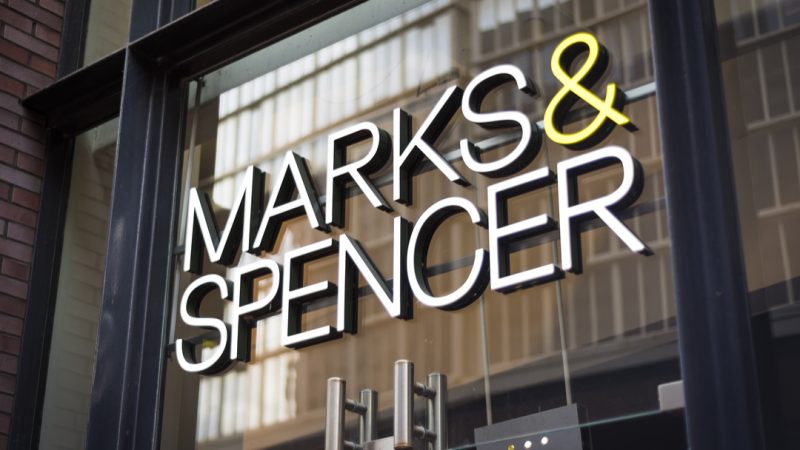UK supermarkets could cut throwaway plastic by 50% 2025 by reducing plastic across 54 grocery categories

Supermarkets could make big cuts to the amount of plastic waste they produce by zeroing in on just a few ‘problem products’ responsible for a big chunk of their plastic footprint, a groundbreaking new report has found.
The report from Greenpeace models how UK supermarkets could make significant reductions to the amount of plastic they produce, by focusing their attention on the packaging for 54 grocery categories. The analysis also shows that changing the packaging for just 13 of these categories, for popular groceries, like fizzy drinks, fruit and vegetables, and household detergents, supermarkets could reduce plastic by approximately 35%, remove 45 billion pieces of supermarket plastic, and remove more than 300,000 tonnes of plastic. This is the equivalent weight of more than 7,000 supermarket delivery lorries, that if lined up nose to tail could lead from Birmingham to Manchester.
Today’s report, Unpacked: How supermarkets can cut plastic packaging in half by 2025, shares brand new data analysis for the amount of plastic packaging our supermarkets are producing each year, based on 2019 supermarket figures. It features new calculations for the estimated weight, sales units and number of components (pieces) of plastic in our collective grocery shopping, and the numbers are representative of the entire UK supermarket sector, which has never been done before. Previous research has not detailed the number of plastic components, such as the individual lids, labels and films, and previous studies have not examined the plastic in terms of product categories, like bottled water, fizzy drinks, household detergents and vegetables.
Greenpeace’s report not only provides the most up-to-date calculations of how much plastic packaging our supermarkets are using, but also explains a model for how all UK supermarkets could cut their plastic packaging by 50% by 2025. Importantly, the report provides a unique sector-wide view for the first time. By identifying the “hotspot” product categories which the new data sets suggest put the most single-use plastic onto the market, the report points out the product categories that have the highest potential for plastic reduction.
Hugh Fearnley-Whittingstall, celebrity chef, food writer and presenter of War on Plastic, said:
“Most of us are aware that we have far too much single-use plastic in our lives, and from the response to our War on Plastic shows on BBC1, I believe most of us want much less, and are prepared to do something about it. But we need much more help from the big retailers to achieve this. Our supermarkets sold us 114 billion pieces of throwaway plastic packaging last year. That’s so much, it’s almost impossible to visualise. But I can tell you, it wouldn’t all fit in Wembley stadium.”
“Most of the supermarkets are making plastic reduction pledges of one sort or another, and some of them, like Waitrose and M&S, are trialling refill and reuse solutions in store. As you’ll see in our War on Plastics show on BBC1 on Tuesday, Tesco is launching a scheme to include refillable, reusable containers for on-line deliveries. Some of this is encouraging, and some of it is, frankly, tokenistic window-dressing. But none of it is happening fast enough for a problem that’s so urgent for our environment.”
“Greenpeace has worked out how supermarkets could halve their plastic packaging in just 5 years. That’s a brilliant target, and there’s no doubt the supermarkets could hit it if they really wanted to. We need to make them want to – by supporting every plastic reduction initiative and avoiding throwaway plastic where possible. Leave over-packaged plastic covered produce on the shelves, buy unpackaged produce whenever you see it, and switch to the shops and supermarkets who are making real changes that help you to shop with less plastic. We need to get the supermarkets competing to reduce plastic – by letting them know our continued custom depends on it.”
Stuart Lendrum, Head of Packaging, Quality and Food Safety at Iceland, said:
“This new report from Greenpeace paints a stark picture of the scale of plastic packaging as an issue, the opportunities for change and the need for the supermarket sector to act unequivocally, whilst acknowledging the challenges will help kickstart the opportunity for an industry and governmental rethink.
“The retail and packaging sectors continually demonstrate the ability to innovate and change. Supply chains are often shared – we all need to do better on cutting plastic packaging and that starts with accepting and acknowledging the scale of the challenge. We at Iceland are doing our very best to be clear, creative and collaborative. Despite COVID-19 we’re maintaining our commitment to eliminate our own label plastic packaging by the end of 2023. We’ve already reduced our own label plastic packaging by 29% and we’re committed to doing our bit to help create a stronger, more resilient, greener and healthier economy.”
Nina Schrank, plastics campaigner at Greenpeace UK, said: “For the first time, data specialists have mapped out where the greatest potential lies for drastically reducing the volume of plastic packaging going through our supermarket tills. It kick-starts one of the most important environmental questions of our time: How and where can we reduce throwaway plastic packaging? And fast. The challenge to change our plastic habits, move to widespread reuse and refill systems, and turn the tide on plastic pollution, is vast. It will not be easy but it will be possible, and we think UK supermarkets can do it.”
Today’s report recommends that supermarkets reduce plastic packaging across 54 product categories, but also reveals that enormous cuts can be made to their plastic footprints by focusing on just the 13 categories with the highest potential for reduction. Greenpeace has selected these 13 categories in particular because they generally score highly in all 3 metrics – weight, sales units and the number of components. If reductions are made across these 13 categories alone, UK supermarkets could reduce their plastic output by approximately 35% or just over a third (approximately 70% of the way to the target of 50% by 2025). Greenpeace proposes that retailers prioritise these categories first, in order to make far-reaching reductions in single use plastic as quickly as possible.
The 13 recommended categories are bottled water, fizzy drinks, milk, still drinks and fruit juices, household cleaning products, detergents and softeners, sports and energy drinks, rice, vegetables and salads, fruit, fruit juice, dilutables (cordials and squash drinks), and bath and shower products. Changing the packaging for these 13 product categories could remove 45 billion pieces of supermarket plastic, and more than 300,000 tonnes of plastic – the equivalent weight of more than 7,000 supermarket delivery lorries, that if lined up nose to tail could lead from Birmingham to Manchester.
The report also draws attention to the fact that just five product categories, within the set of 13, are estimated to contribute 247,000 tonnes of plastic packaging every year. Bottled water, fizzy drinks, milk, vegetables and salads and wrapped fruit are collectively packaged in around 46 billion pieces of plastic. If supermarkets follow the recommendations in the report for reducing the plastic on these five product categories alone, they could reduce their plastic footprints by 35% by 2025, 70% of the way to the 50% reduction target.
Claire Hughes, Head of Quality and Innovation at Sainsbury’s, said:
“We were the UK’s first major retailer to commit to halving our use of plastic packaging by 2025, this is a priority for us and we know it’s an important issue for our colleagues and customers too. We are making good progress in the five categories Greenpeace highlights as having the most reduction potential. However, in order to reach this ambitious target, we need transformational thinking and collaboration across the industry. We will work alongside our suppliers, manufacturers, customers and other retailers to reduce the amount of plastic across the supply chain, whilst also investing in research and development.”
In order to turn back the tide on plastic pollution, concerted action is required by both retailers and government. Greenpeace is asking retailers and brands to commit to setting ambitious targets to at least halve single-use plastic by 2025, and also to set targets to ensure at least 25% of this is met by systems of reusable packaging. All non-recyclable packaging, like laminates and films, should be urgently eliminated.
Ben Thomas, Environment Manager for Waitrose & Partners, said:
“Removing unnecessary plastics is a priority for us and something we know is equally important to our customers. We’re already removing unnecessary packaging in our supply chain where we can, and introducing alternative packaging materials to make recycling easier for customers. We’ve gained valuable learnings from our Unpacked tests, which include refillable and re-use systems, and we’re now looking at how we develop it in our business. The next big challenge for the supermarket sector will be minimising single-use packaging and enabling customers to easily refill containers – wherever they shop.”
Susan Thomas, Senior Director of Sustainability at ASDA, said:
“We know that our customers want less plastic packaging and we’re committed to removing and reducing unnecessary and hard-to-recycle materials from our stores. We’ve already removed over a billion pieces of plastic packaging from Asda Brand products – for example by removing the polystyrene base in our pizzas and the plastic trays for our steaks – and will continue to rigorously identify and remove more wherever we can without damaging product quality or shelf life. We’re also accelerating our work by trialling refill solutions in several high-plastic categories, learning with our colleagues, suppliers and customers to test, improve and ultimately roll out great solutions which help our customers save money as well as reduce their environmental footprint.”
Chris McKenry, Plastic and Packaging Director at Aldi UK, said:
“Aldi is committed to reducing plastic waste, which is why we were one of the first supermarkets to set a target to halve plastic packaging by 2025. We’ve already made good headway and have to date removed over 6,000 tonnes of plastic from across our product range. Cutting our plastic packaging footprint in half is a challenge, but one we’re confident that we can rise to.”
An M&S spokesperson said:
“M&S has already demonstrated our commitment to reducing unnecessary plastic by removing over 2000 tonnes from our food packaging ranges, reducing carrier bag usage by 90% since 2008 and offering 7 million Sparks card holders a free reusable tote bag. We have long established programmes such as our Hanger Recycling scheme, as well as live trials underway to test selling more loose fruit and vegetables, enabling shoppers to bring their own containers to refill (including water bottles) and helping customers recycle hard-to-recycle plastics. But we know there is more to do – and this requires an industry-wide approach – so over the coming months we will announce projects that we’ve been working on to help us – and our customers – reduce, reuse and recycle.”




